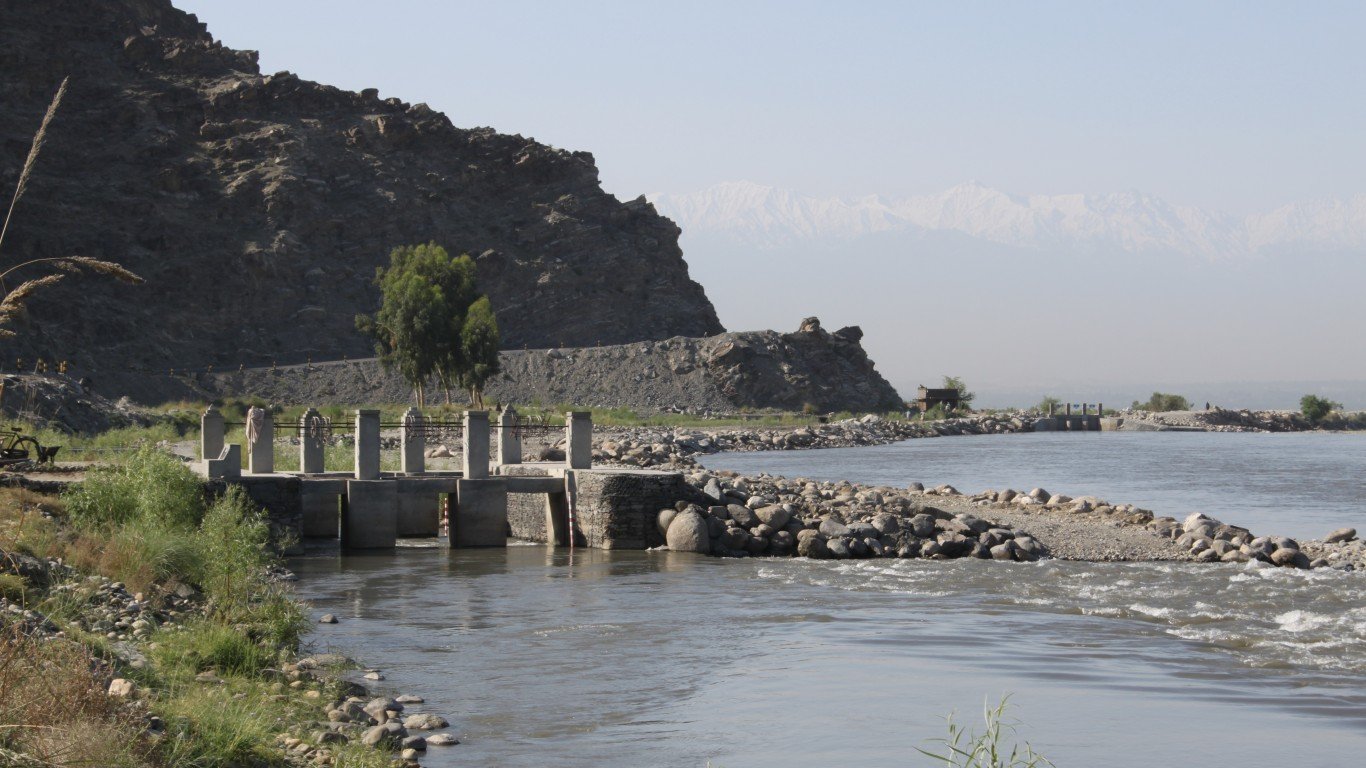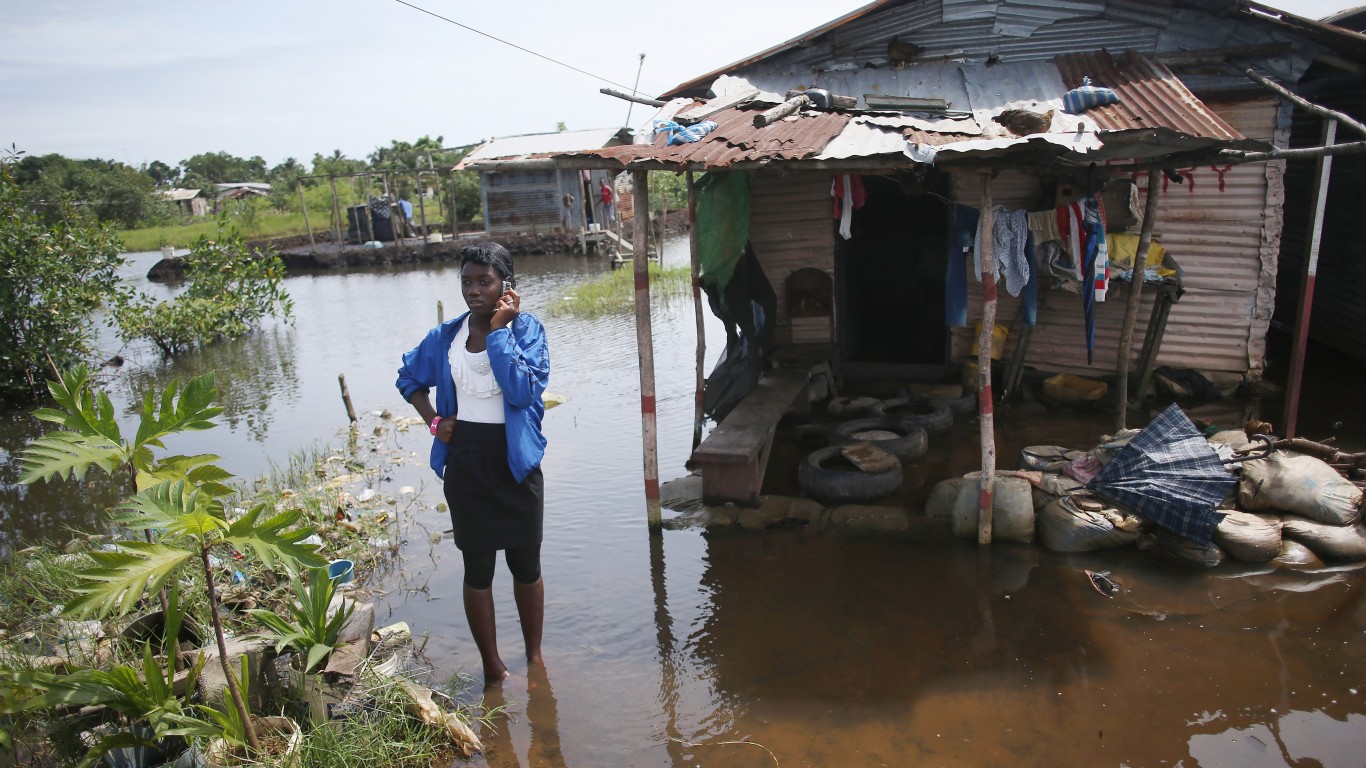
10. Liberia
> Overall index score: 33.8
> Vulnerability score: 0.60
> Worst vulnerability sector: Water
> Readiness score: 0.28
> Worst readiness dimension: Economic
> GDP per capita: $1,392 – #168 highest out of 182 countries
> Population: 5,057,677 – #120 highest out of 182 countries
Liberia’s economic development has improved since the end of its civil war in 2003, but the West African country is still fraught by extreme poverty and inadequate public infrastructure. Vital agricultural activities are hampered by soil degradation and extreme weather events, and those issues are expected to worsen as sea levels rise, impacting the country’s fertile coastal lowlands.
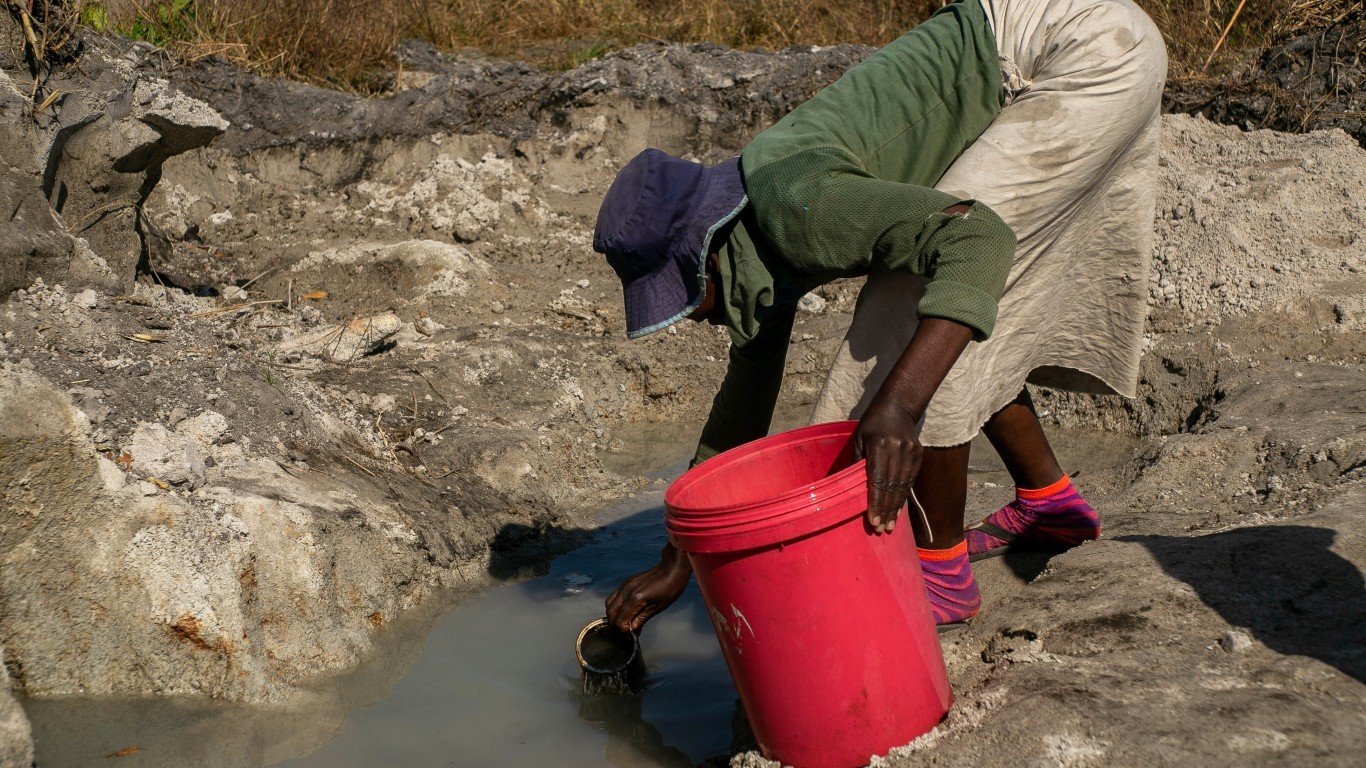
9. Zimbabwe
> Overall index score: 33.1
> Vulnerability score: 0.55
> Worst vulnerability sector: Water
> Readiness score: 0.22
> Worst readiness dimension: Social readiness
> GDP per capita: $2,135 – #159 highest out of 182 countries
> Population: 14,862,927 – #73 highest out of 182 countries
This landlocked sub-Saharan African country has suffered from years of economic and political instability, and climate change will exacerbate these issues by adversely impacting food and water security. Like many other African countries, Zimbabwe depends highly on rain-fed agriculture and will be susceptible to a volatile combination of increased variability and intensity of precipitation and droughts.
8. Afghanistan
> Overall index score: 33.0
> Vulnerability score: 0.58
> Worst vulnerability sector: Water
> Readiness score: 0.24
> Worst readiness dimension: Governance
> GDP per capita: $1,971 – #162 highest out of 182 countries
> Population: 38,928,341 – #37 highest out of 182 countries
Four decades of extreme political and socioeconomic conditions have crippled Afghanistan’s ability to implement measures to adapt to global warming in this mostly arid and landlocked Central Asian country. Climate change will manifest in generally drier conditions, and changes in precipitation and snowmelt will increase seasonal flash flood risks. An increased competition for resources — namely water — could lead to more internal strife and displacement of impoverished communities.
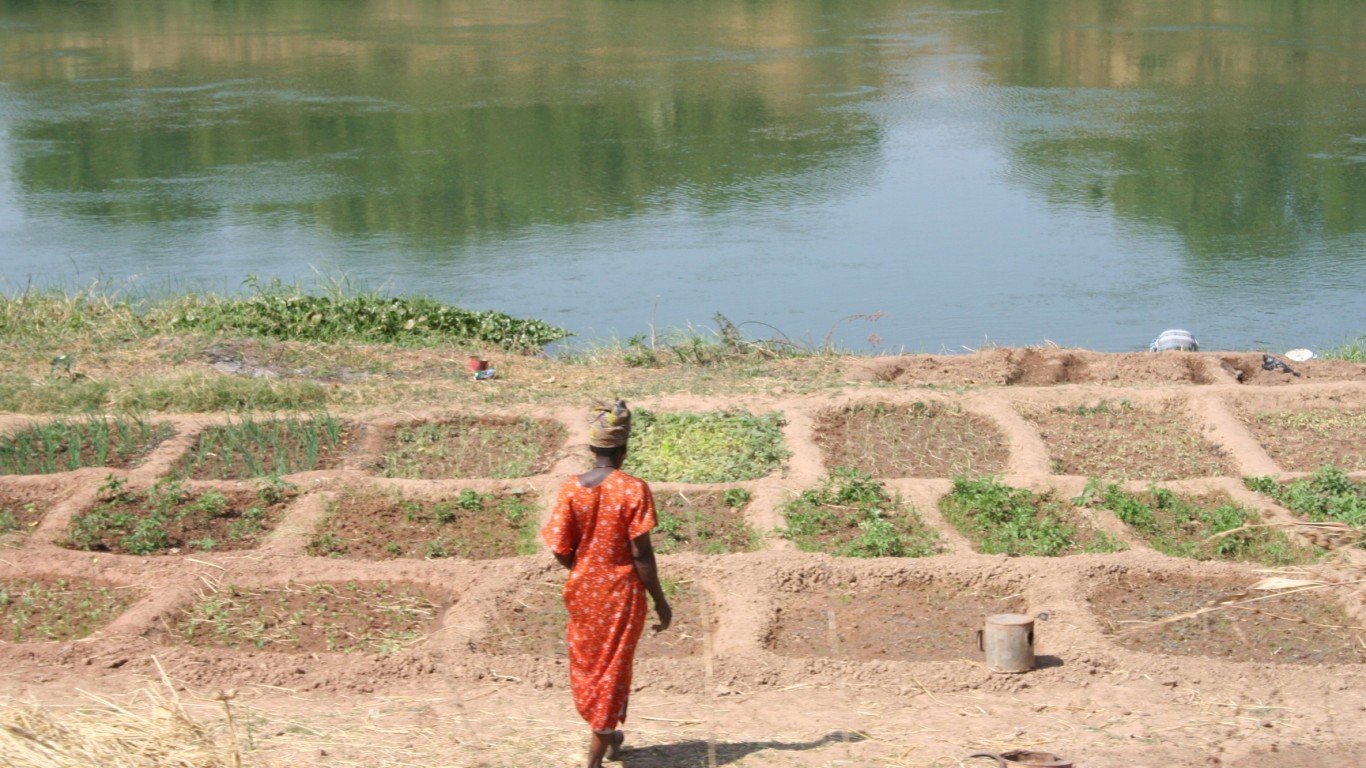
7. Niger
> Overall index score: 32.9
> Vulnerability score: 0.68
> Worst vulnerability sector: Ecosystem services
> Readiness score: 0.33
> Worst readiness dimension: Social readiness
> GDP per capita: $1,221 – #170 highest out of 182 countries
> Population: 24,206,636 – #56 highest out of 182 countries
Rising temperatures and increased rainfall unpredictability will have profound impacts in Niger, a landlocked, politically unstable African country that lies mostly in the Saharan desert. With so little arable land, Niger experiences chronic food insecurity that will get worse, as agricultural yields and water quality decline as a result of climate change.
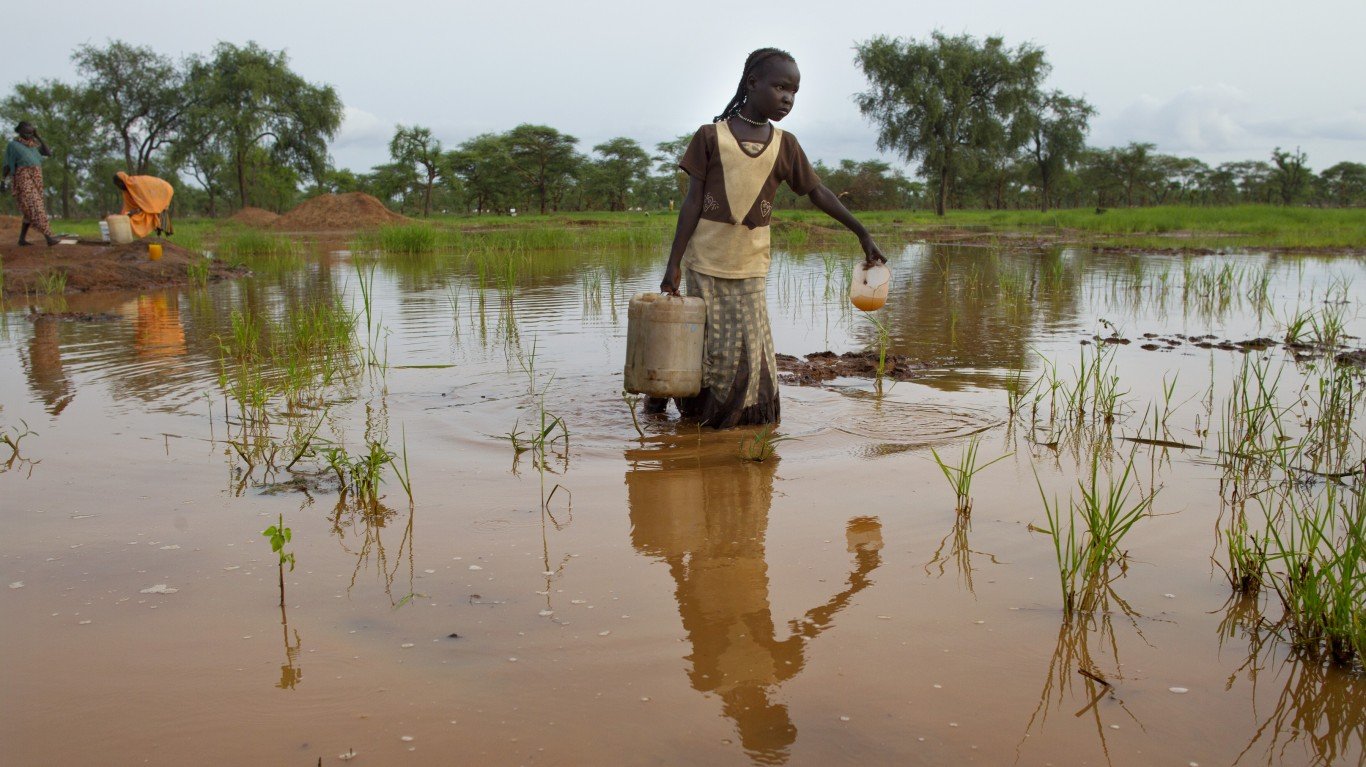
6. Sudan
> Overall index score: 32.3
> Vulnerability score: 0.62
> Worst vulnerability sector: Infrastructure
> Readiness score: 0.26
> Worst readiness dimension: Governance
> GDP per capita: $3,927 – #137 highest out of 182 countries
> Population: 43,849,269 – #35 highest out of 182 countries
Climate change will pose profound challenges to Sudan’s ability to combat extreme poverty and food insecurity. This mostly arid East African country has been experiencing rapid southward-moving desertification that will increase with high frequencies of droughts and less dependable seasonal rainfall. Reduced pastureland and lower crop yields will further drive rural populations into urban centers, while storm surges will impact Sudan’s riverside and Red Sea coastal communities.
